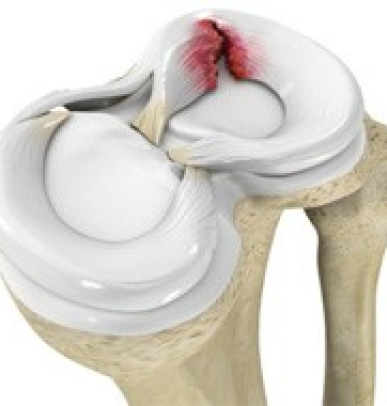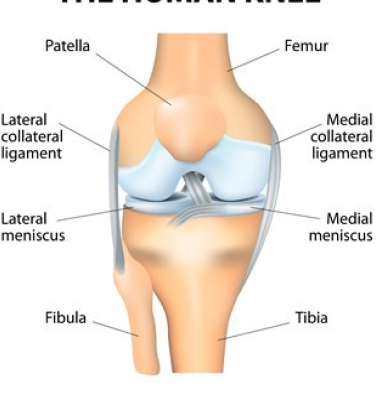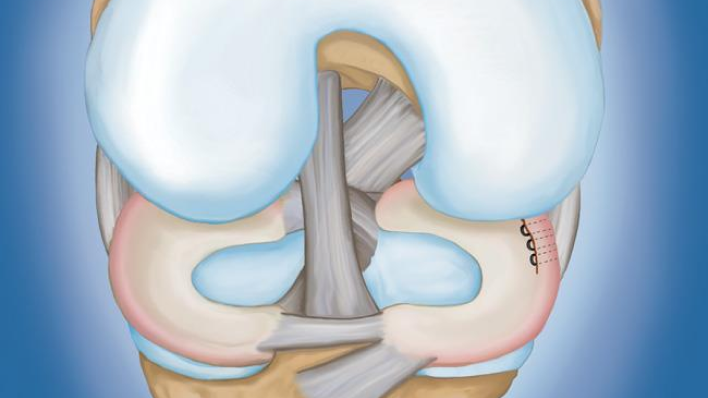Meniscal Tears

Overview
Meniscal Tears
Knee pain from Meniscal Tears can be a frustrating and painful experience, often affecting your ability to move freely and enjoy everyday activities. Whether it’s caused by a sudden injury or the natural wear and tear over time, the discomfort and limited mobility can feel overwhelming.
At Tarabichi Joint Care, we understand the challenges that come with meniscal tears and are dedicated to providing personalized treatment options, like arthroscopy in Dubai, that can help you get back to living a pain-free, active life. Our expert team offers cutting-edge techniques for diagnosing and treating meniscal injuries so that you recover fully and regain your mobility.
Anatomy
- The medial meniscus located on the inner side of the knee.
- The lateral meniscus positioned on the outer side of the knee.
What is a Meniscal Tear?
A Meniscal Tear is a type of knee injury that frequently occurs among athletes participating in contact sports. It often occurs when the knee is twisted or bent suddenly (knee injury), causing a tear in the cartilage. As people age, the meniscus can weaken and degenerate, making older adults more susceptible to meniscal tears due to cartilage deterioration.
Causes of Meniscal Tear

Trauma
A sudden twist in the knee, often occurring with abrupt stops, pivots, or jumps. Meniscus tears are frequently seen in high-impact sports like football and wrestling, as well as in non-contact sports that involve pivoting or jumping, such as volleyball and soccer.

Degenerative Diseases
Even in the absence of severe trauma, the knee's cartilage continuously deteriorates with age, increasing the risk of a meniscus tear.

Additional Activities
Meniscus tears can also result from activities including crouching, kneeling, lifting large objects, or climbing stairs.
When is Meniscal Tear treatment recommended?
A torn meniscus symptoms can vary from person to person, but if the symptoms have grown to be very painful or if you are encountering any of the following, you must consult an expert immediately:
- Pain in the knee joint, often felt on the inner (medial), outer (lateral), or rear side of the knee
- Swelling around the knee
- A sensation of the knee cracking or locking
- Difficulty fully straightening or bending the knee
- Limping or difficulty walking
Meniscal Tears Treatment
Non-Surgical Approach
Treatment for meniscal tears depends on factors like the size and location of the tear, your age, activity level, and any associated injuries. If your knee remains stable, doesn’t lock, and symptoms improve on their own, nonsurgical treatment may suffice.
To support recovery, the RICE method is often recommended:
- Rest: Give your knee some rest by avoiding activities that caused the injury. Limit movement to walking if it's painful, and consider using crutches to alleviate discomfort.
- Ice: Apply ice to your knee for 15-20 minutes at a stretch. Repeat the process every 3-4 hours over 2-3 days until the symptoms subside.
- Compression: Use an elastic bandage or a neoprene sleeve to minimize swelling in the knee.
- Elevation: Keep your knee elevated by placing a pillow under your heel while sitting or lying down.
Additionally, you may:
Take anti-inflammatory medications: Nonsteroidal anti-inflammatory drugs (NSAIDs) can help reduce pain and swelling. However, these medications come with potential side effects, such as an elevated risk of bleeding and ulcers, so they should be used sparingly unless the doctor advises otherwise.
Surgical Intervention
Knee Arthroscopy is a commonly recommended surgical option for treating meniscal tears.
This minimally invasive procedure entails inserting a tiny camera through a small incision to allow the surgeon to view the inside of the knee on a large screen. The surgery itself is performed through additional small incisions.
The techniques used during arthroscopy include meniscus removal (meniscectomy), meniscus repair, and meniscus replacement. In a meniscectomy, small instruments like shavers or scissors are used to eliminate the damaged portion of the meniscus.
For knee arthroscopy in Dubai, the torn meniscus is pinned or sutured, depending on the severity of the tear. Meniscus replacement, or transplantation, involves replacing the damaged cartilage with tissue from a donor or a cultured patch from a lab. This option is typically considered to alleviate knee pain in individuals who have previously undergone a meniscectomy.
Dealing with Meniscal Tear discomfort can be challenging.
Get the right treatment at Tarabichi Joint Care
Living with the discomfort of a meniscal tear can significantly impact your mobility and quality of life. However, with the right care and treatment, recovery is within reach.
At Tarabichi Joint Care, our experienced team is committed to providing tailored sports medicine in Dubai and solutions that address your unique needs, whether through advanced non-surgical techniques or minimally invasive procedures like knee arthroscopy.
Contact the Tarabichi Joint Care team to help you regain your mobility and get back to living life without pain.
